ㅡ
The secret to becoming No.1!
ㅡ
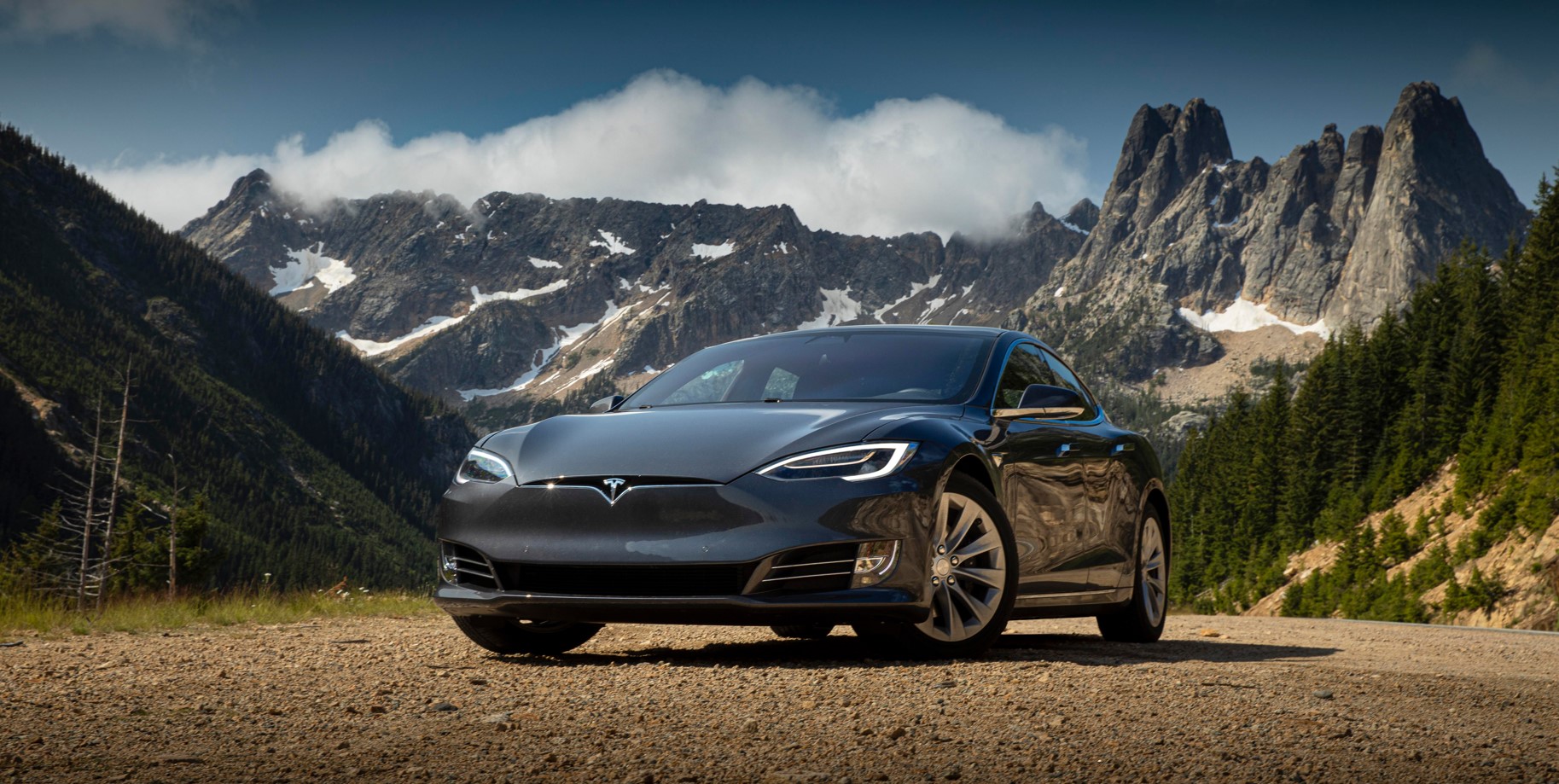
▲ Tesla Model 3
Elon Musk is the world's richest person as of November 2021 according to Forbes.
He is said to have an estimated net worth of $320.3 billion. He has succeeded in an array of businesses such as PayPal, an online payment system, SpaceX, a rocket and spacecraft business, Tesla Energy, a solar panel business, and OpenAI, which is researching artificial intelligence.
One of the most well-known companies is Tesla, which makes electric vehicles. According to Consumer Reports, 91% of Tesla drivers said they would buy a Tesla again. The most prevalent reason was “the pleasure of owning a future-oriented image.”
Tesla's forward-looking image is reflected in their mission statement.
>“Tesla's mission is to
accelerate the global transition
to sustainable energy.”
Aren't you curious about what Tesla's goal of “sustainable energy”, that made Elon Musk the world's richest person, is?
ㅡ
Poisoned chalice
Fossil energy
ㅡ

First, let's look at “unsustainable energy”. Fossil energy accounts for the largest portion of the energy currently used by mankind.
Fossil energy is the heat and pressure from the remains of plants and animals buried in the ground long time ago.
It is energy created from fossil fuels that has been accumulated as a result. Examples include coal, oil, and natural gas.
Click here to see the percentage of global energy consumption!
https://yearbook.enerdata.co.kr/total-energy/world-consumption-statistics.html
Fossil fuels are abundant since they are buried underground on a large scale, and they are not only easy to store and transport, but also highly energy efficient.
However, fossil fuels are energy that we are depleting, requiring at least millions of years to hundreds of millions of years to be created in the natural world. Experts predict that if consumption continues at the current rate, oil will be depleted in 50.7 years, natural gas in 52.8 years, and coal in 114 years.
Yet even more serious than energy depletion are the immense greenhouse gas emissions from fossil energy.
Seventy-three percent of the greenhouse gases that cause global warming come from fossil fuels. Humans use fossil fuels such as petroleum, coal, and natural gas, and every year, approximately 51 billion tons of carbon is emitted into the atmosphere.
Even as we speak, carbon emitted from fossil fuels is attacking humankind through climate disasters such as heat waves, heavy snowfalls, typhoons, droughts, and forest fires in diverse parts of the world. If we persist in utilizing fossil fuels at such a rate, global warming will reach an irreversible critical point.
Bill Gates, a software tycoon-turned environmental activist, warns of an urgent need to halt the usage of fossil fuels in his book How to Avoid a Climate Catastrophe.
He assert that “20 percent of greenhouse gases emitted today remain in the atmosphere even after 10,000 years.” He further emphasized the urgent need for a switch to renewable energy if humanity is to survive a climate catastrophe.
ㅡ
Energy detox
Renewable energy
ㅡ
Our planet is full of toxins and needs an energy detox. This involves reducing the use of fossil fuels and replacing them with sustainable energy, green energy.
Types of renewable energy
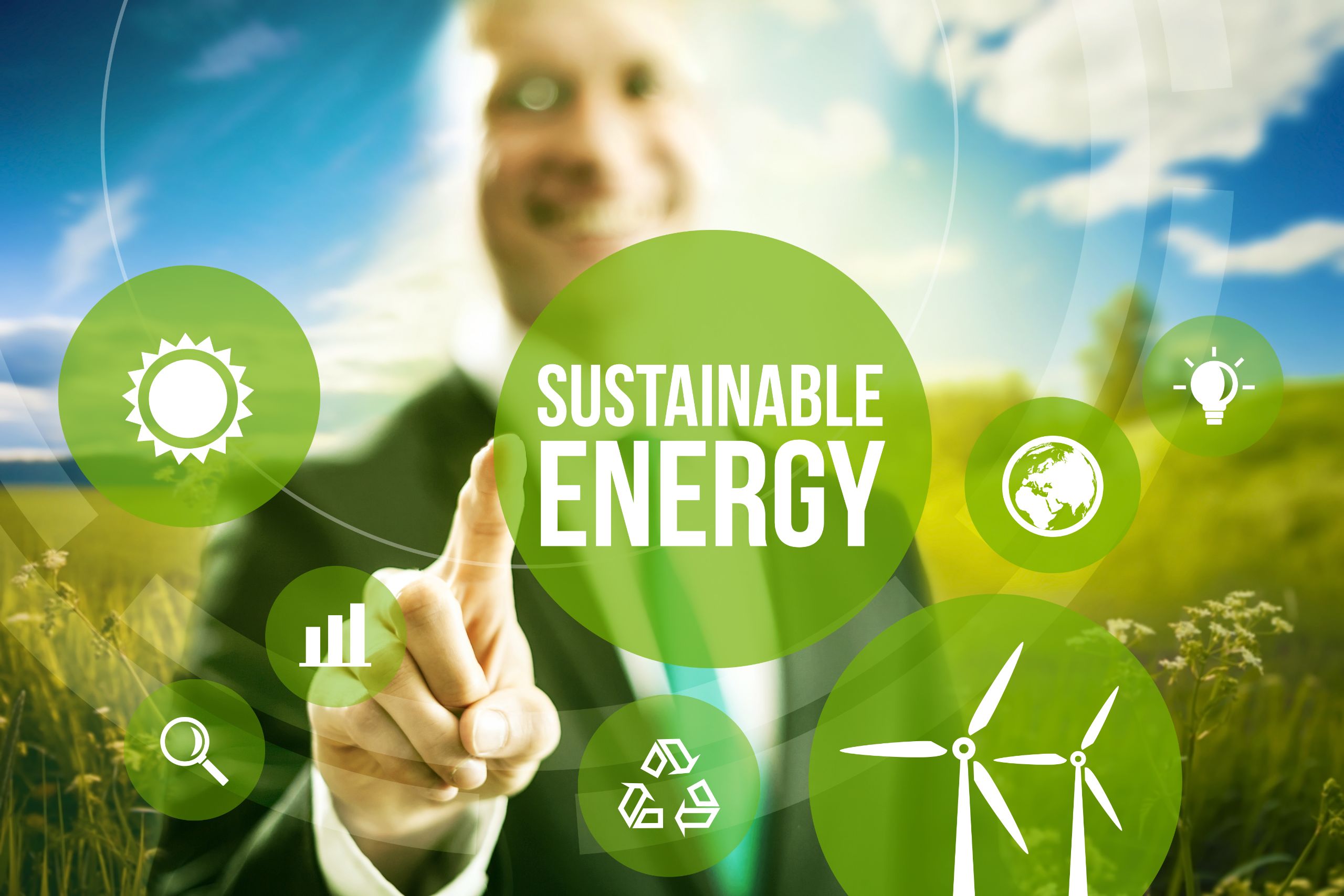
● Solar heat and solar power: an energy production method that utilizes the heat and light of the sun. It absorbs solar energy to heat water or collects sunlight using a heat collecting plate, stores it in solar cells, and uses it for energy production.
● Wind power: an energy production method that utilizes the kinetic energy of wind. A three-blade windmill spins with the force of the wind and powers a generator to produce energy.
● Hydropower: an energy production method that uses the power of water to turn a generator. After building a dam on a river, water gates can be opened to use the fast-moving water to turns turbines and generates energy.
● Biomass: a method of energy production that utilizes living organisms. Grains, fruits, trees, animal excrement, waste, etc., are converted into ethanol and methane gas to be used as energy.
● Geothermal: An energy production method that utilizes the high heat of the Earth's interior. It uses the hot water that exists underground to operate an electric turbine to produce energy.
● Hydrogen energy: a method of producing energy by burning hydrogen present in organic matter or water. Hydrogen is attracting attention as a pollution-free energy source because it does not emit pollutants even if it is combusted by combining with oxygen in the air.
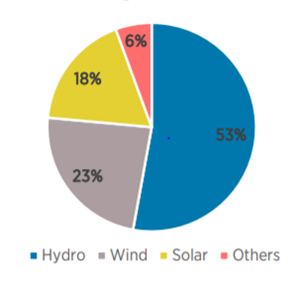
Renewable energy share
Among these, the most prevalently used renewable energy is hydrogen energy (53%), followed by wind energy (23%) and solar (18%) energy.
ㅡ
Sustainable energy
Goal
ㅡ
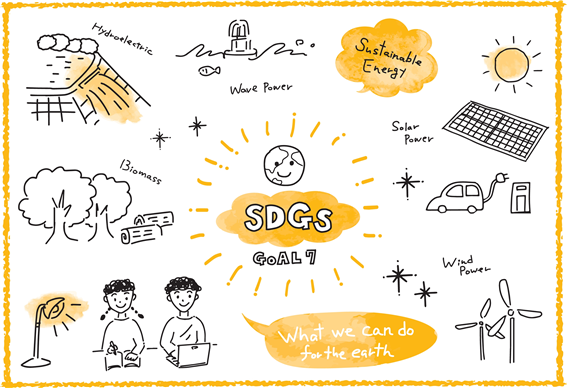
Among the UN's Sustainable Development Goals (SDGs) the 7th is “Affordable and Clean Energy.”
It becomes somewhat clear that sustainable energy is a global concern, right?
The details of this goal set by the United Nations are as follows.
7.1 Ensure universal access to affordable, reliable and modern energy services by 2030
About 2.8 billion people, or one-third of the world's population, use unsanitary and unhealthy fuels such as charcoal, coal, and animal waste for cooking. Moreover, indoor air pollution from these low-quality fuels kills 4.3 million people a year. Ensuring access to energy is essential for survival.
7.2 Significantly increase the share of renewable energy in the global energy mix (diversification of energy sources) by 2030
As of 2017, 17.5 percent of the world's electricity was generated from renewable energy. However, according to the International Renewable Energy Agency (IRENA), to overcome the climate crisis, the share of renewable energy in the total energy must be augmented to two-thirds by 2050.
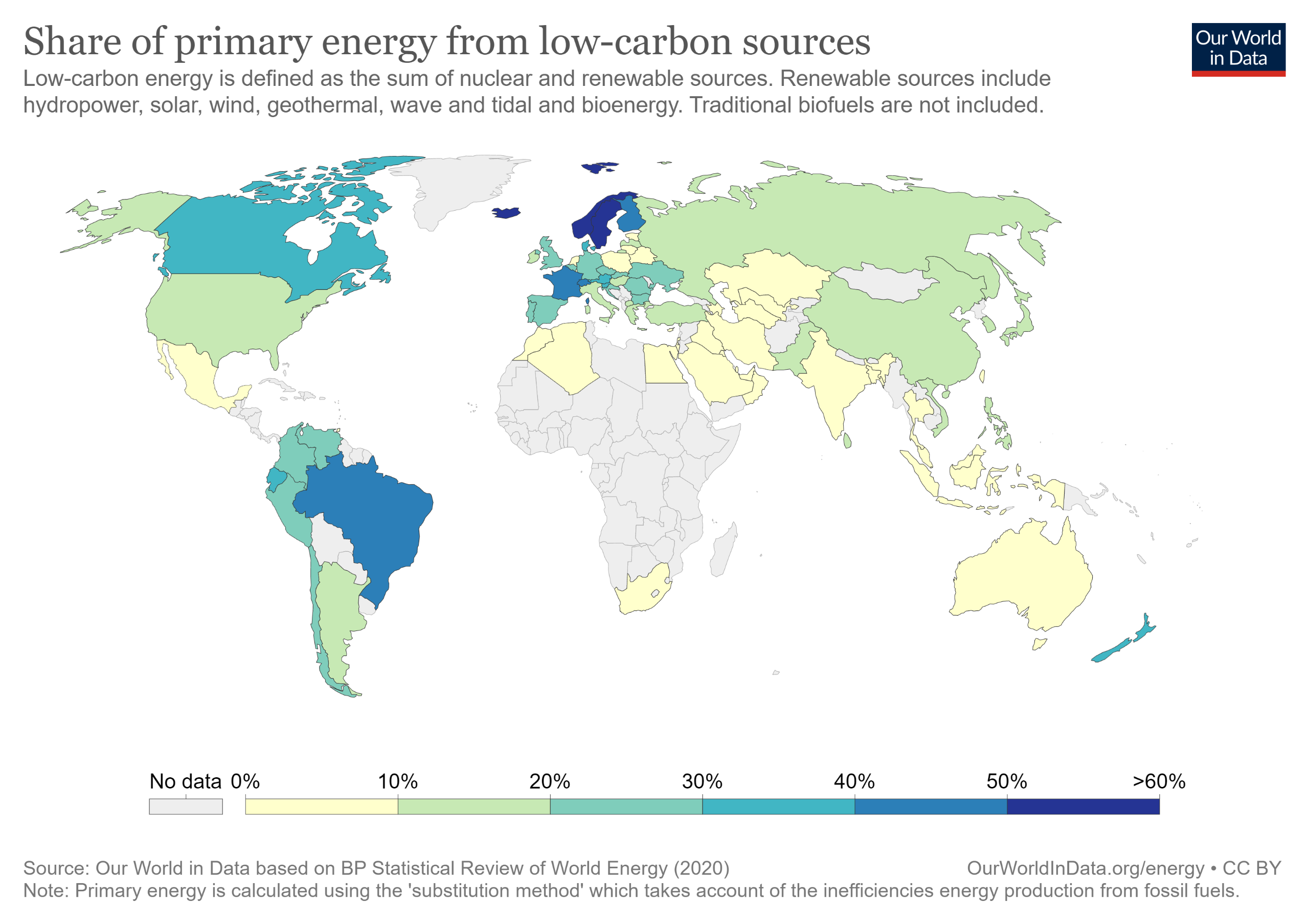
Check out the share of renewable energy in your country!
https://ourworldindata.org/energy-mix
7.3 Double global energy efficiency by 2030
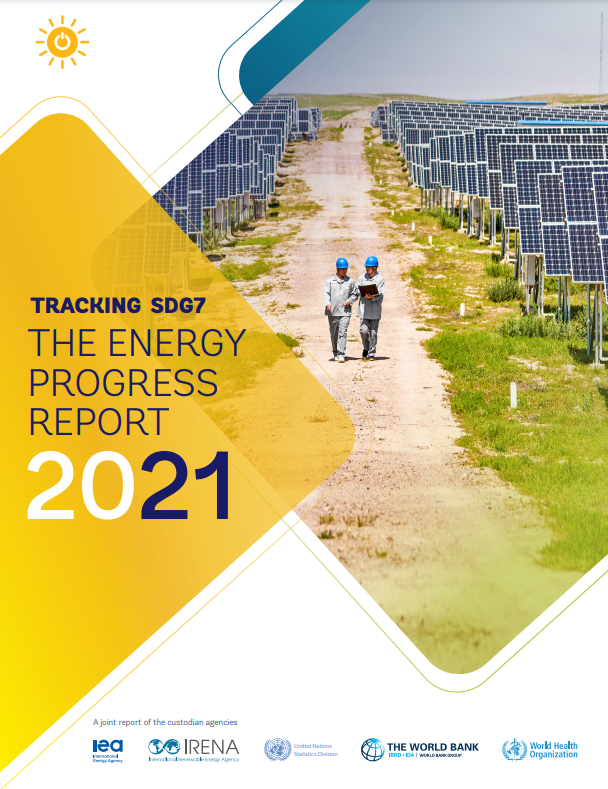
2021 SDG7 Energy Generation Report
https://trackingsdg7.esmap.org/downloads
Energy intensity refers to the amount of energy required to perform a given function.
The UN has set a target of reducing energy intensity from 5.6 MJ in 2010 to 3.4 MJ in 2030.
Increasing energy efficiency can have positive effects in diverse aspects, such as increased access to energy, reduced air pollution, increased resource value, economic benefits, reduced greenhouse gas emissions, reduced energy prices, and energy productivity.
ㅡ
A faster
transition to renewable energy
ㅡ

In 2015, the international community adopted the Paris Agreement, in which both developed and developing countries participated to counter global warming.
The goal of the Paris Agreement is to maintain the global average temperature rise well below 2°C compared to pre-industrial levels, and that further efforts should taken to limit it to 1.5°C.
In order to limit the increase in global temperature to 1.5℃ or less, it is necessary to transition to a “carbon-neutral” society in which net carbon emissions will be zero by 2050.
How can carbon neutrality be achieved? In order to become carbon-neutral, where the amount of carbon emitted and the amount removed is the same, we must first focus on reducing carbon emissions as much as possible.
Furthermore, the remaining greenhouse gases must be absorbed by forests or removed using carbon capture, utilization and storage (CCUS) technology.
The most important way to achieve carbon neutrality is to shift the main energy source from fossil fuels to new and renewable energy.
Renewable energy is energy that does not generate carbon during usage and can be supplied infinitely even if consumed continuously. It is attracting attention as a new resource to replace fossil energy because of its advantages of being clean and inexhaustible.
Currently, the international community has set carbon neutrality as the top priority. The most recent Conference of the Parties (COP26), the largest conference in the world where heads of countries gather to discuss climate change, was held in Glasgow, UK in November 2021.
The concluding statement implores countries to “strengthen their carbon reduction targets by the end of 2022.” It further emphasizes the need to reduce carbon and greenhouse gas emissions by 45 percent compared to 2010 by 2030 and achieve carbon neutrality by the middle of this century. As a result, the global transition to sustainable energy is expected to accelerate.
ㅡ
Future energy
ㅡ
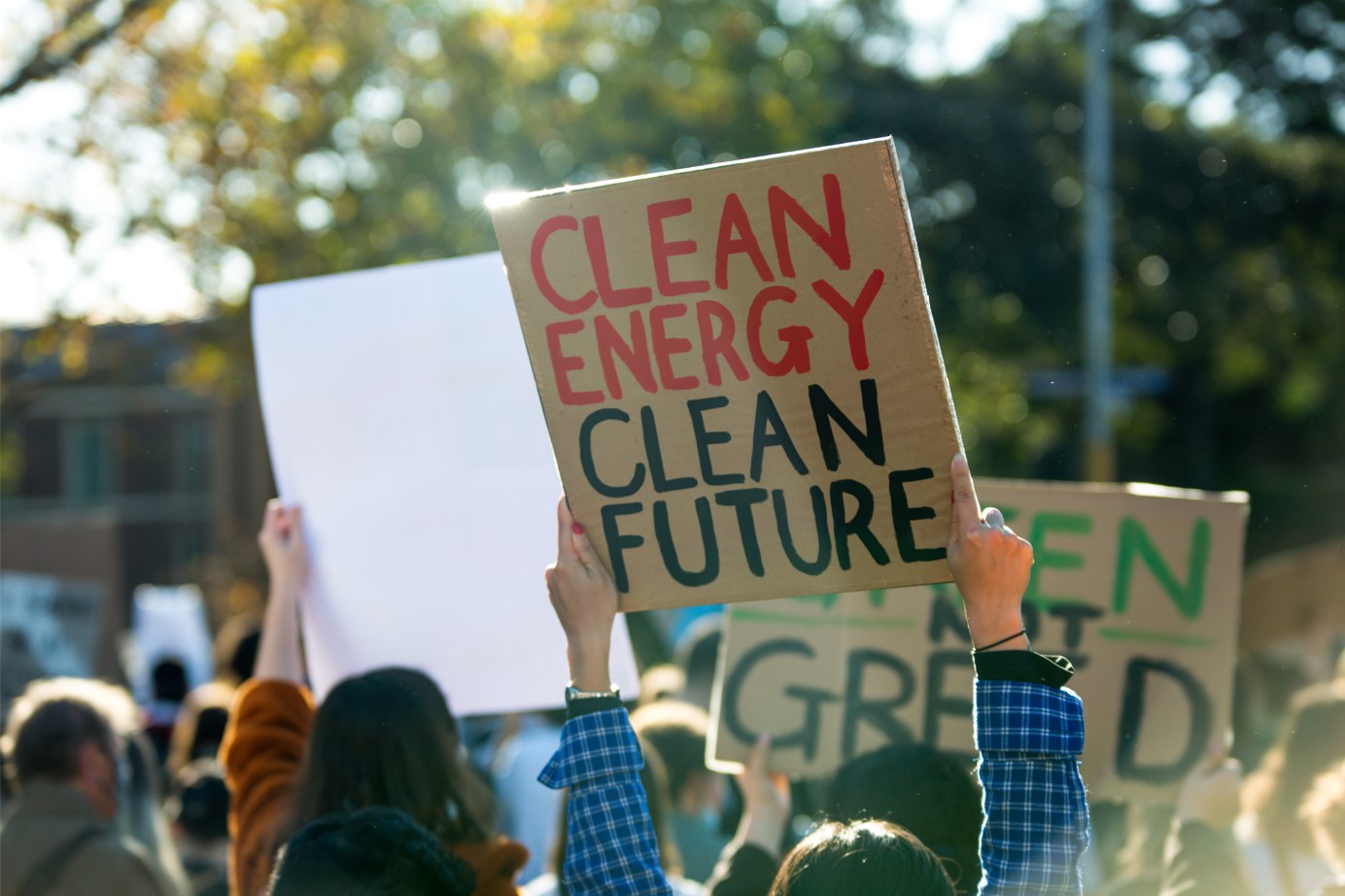
The fossil fuel-powered cars we use today will disappear from the planet in the near future.
Tesla's mission “accelerating the global transition to sustainable energy” is in line with the vision of the international community. Tesla is preparing for the future of the earth and mankind rather than merely being satisfied as an electric vehicle manufacturer.
Many countries are already expanding the means of transportation (automobiles, railways, aircraft, ships, etc.) powered by clean energy sources such as electricity and hydrogen.
In particular, they are promoting the full-scale popularization of eco-friendly vehicles, and the use of biofuels is expanding where it is cumbersome to supply eco-friendly vehicles.
Tesla is not just about cars. Tesla is focusing on energy that can mitigate the Earth's carbon dioxide concentration. Research on a solar roof (a roof-shaped panel that converts solar heat into electricity) and a power wall (a wall-type battery that stores the remaining electricity generated during the day) is being persistently conducted.
As the transition to electric vehicles demonstrates, panels and batteries using renewable energy will naturally become part of our daily lives in the near future.
The reason why people are passionate about the future-oriented nature of the Tesla company is that the choice to drive a Tesla now is a valid choice for the present as well as the future.
What kind of energy will we be using 100 years later?
Written by Sharon Choi
Director of Planning
Sunhak Peace Prize Secretariat

